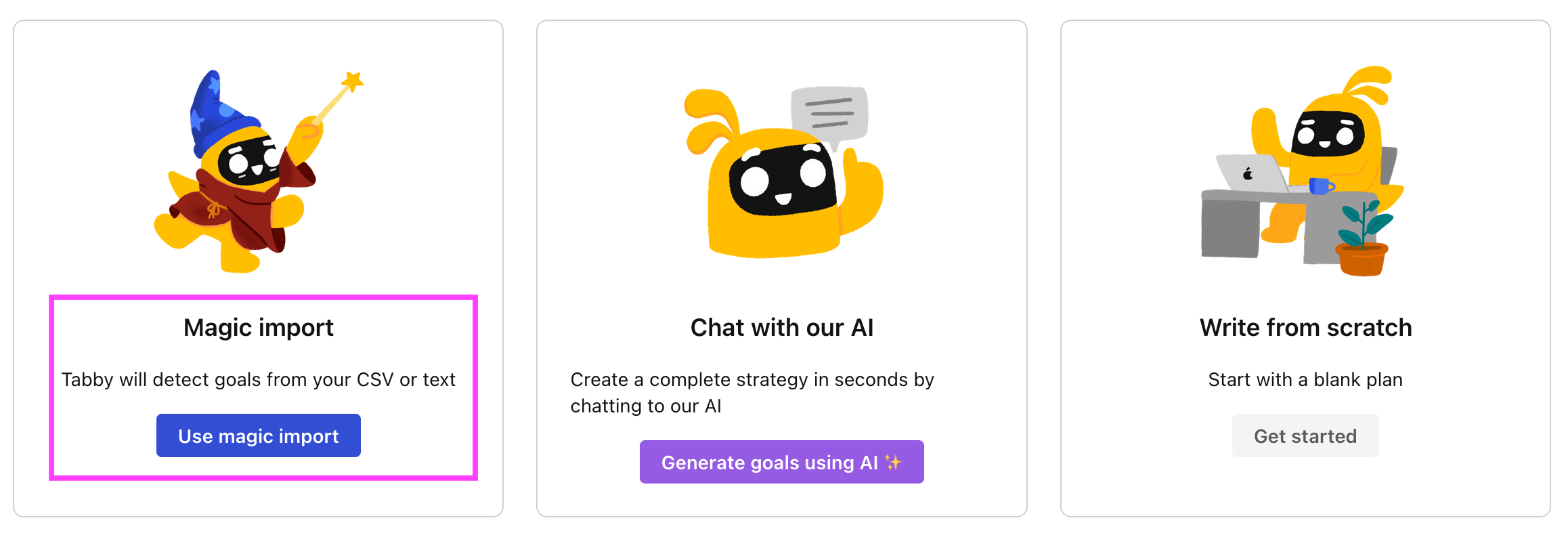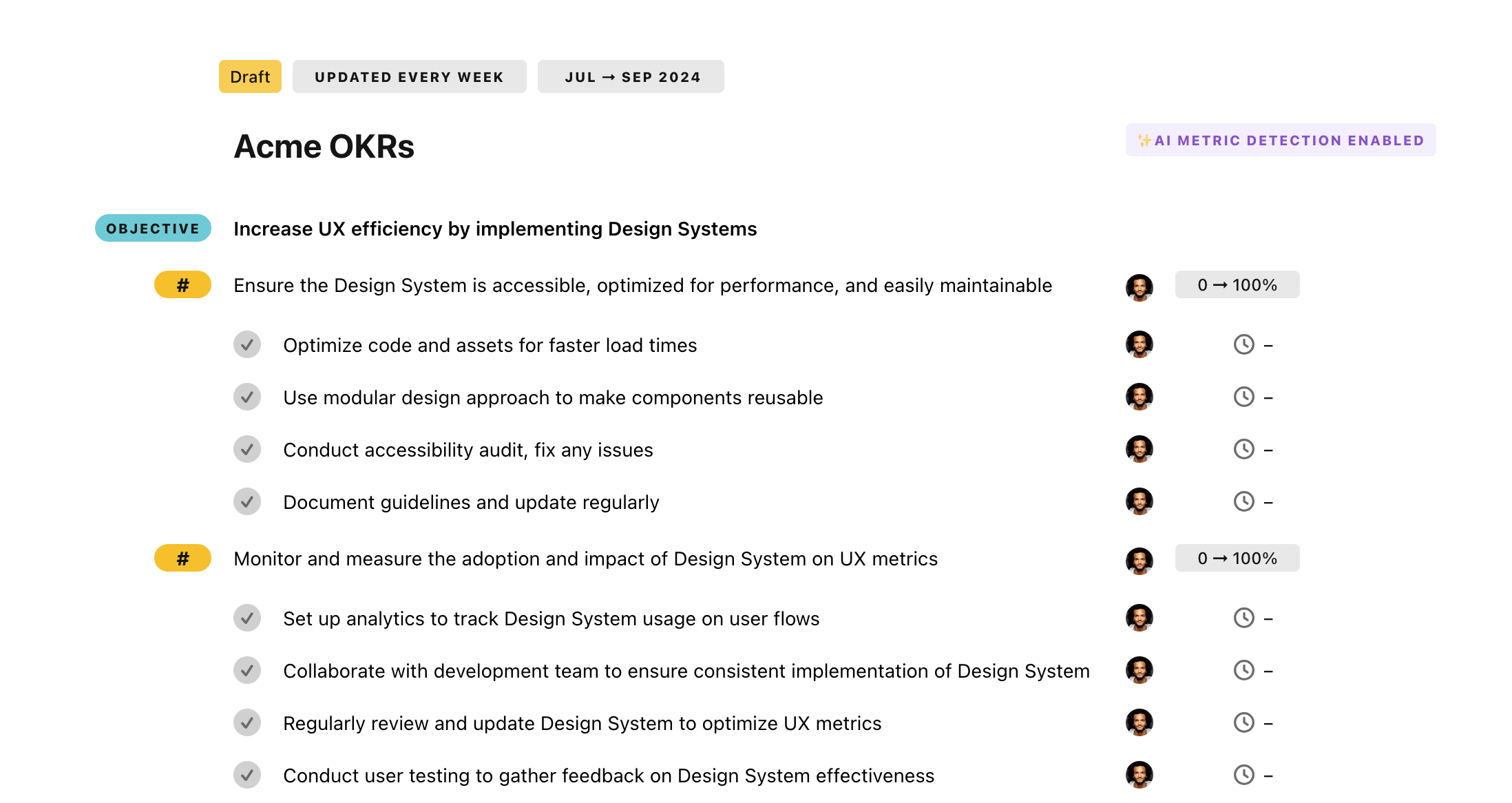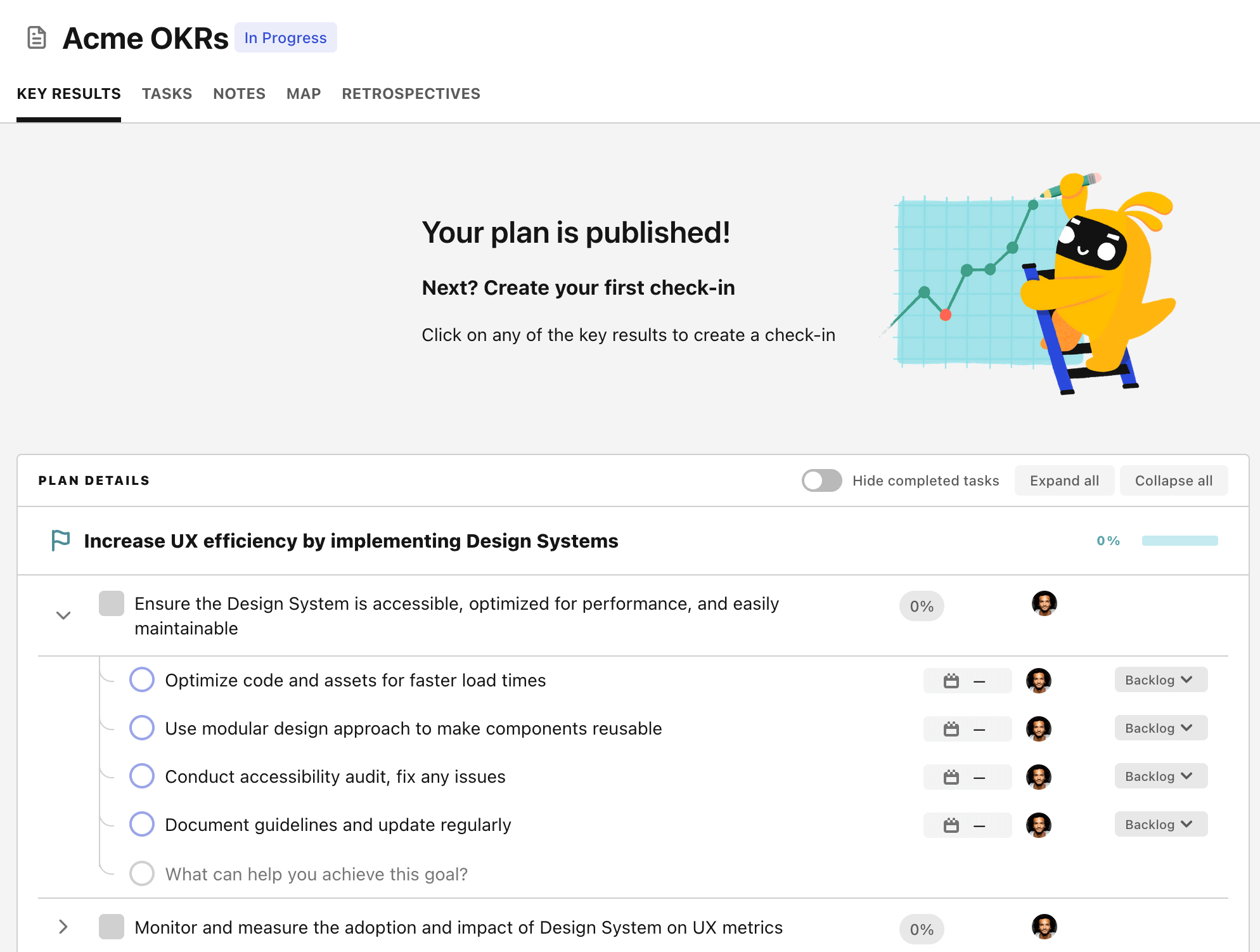OKR template to successfully integrate new technology into the electrical grid
Your OKR template
The second phase involves extensive pilot project testing under different operational setups. The OKR lists the drafting of a detailed testing plan, enacting the plan under multiple operational scenarios, and analysing and documenting the test results as necessary initiatives.
The final process involves obtaining the required regulatory approvals for the technology's integration. The key initiatives to achieve this include identifying the necessary approvals, formulating and delivering the approval applications, and periodically communicating with the regulatory bodies.
This OKR is oriented towards fostering technological advancement in the electrical grid by prioritizing adequate technician training, conducting comprehensive pilot testing, and securing necessary regulatory approvals, all within a stipulated timeframe.
ObjectiveSuccessfully integrate new technology into the electrical grid
KRTrain 80% of technicians on new technology and its grid integration processes
Identify technicians needing training on the new technology
Develop an effective grid integration training program
Schedule and conduct training sessions for selected technicians
KRComplete successful pilot project testing under various operational circumstances
Implement testing under multiple operational scenarios
Develop a comprehensive plan for the pilot project testing
Analyze, review and document the test results
KRSecure necessary regulatory approvals for technology integration within six weeks
Determine needed regulatory approvals for tech integration
Develop and submit approval application documents
Follow up regularly with regulatory bodies
How to edit and track OKRs with Tability
You'll probably want to edit the examples in this post, and Tability is the perfect tool for it.
Tability is an AI-powered platform that helps teams set better goals, monitor execution, and get help to achieve their objectives faster.
With Tability you can:
- Use AI to draft a complete set of OKRs in seconds
- Connect your OKRs and team goals to your project
- Automate reporting with integrations and built-in dashboard
Instead of having to copy the content of the OKR examples in a doc or spreadsheet, you can use Tability’s magic importer to start using any of the examples in this page.
The import process can be done in seconds, allowing you to edit OKRs directly in a platform that knows how to manage and track goals.
Step 1. Sign up for a free Tability account
Go tohttps://tability.app/signup and create your account (it's free!)
Step 2. Create a plan
Follow the steps after your onboarding to create your first plan, you should get to a page that looks like the picture below.

Step 3. Use the magic importer
Click on Use magic import to open up the Magic Import modal.
Now, go back to the OKR examples, and click on Copy on the example that you’d like to use.

Paste the content in the text import section. Don’t worry about the formatting, Tability’s AI will be able to parse it!

Now, just click on Import from text and let the magic happen.

Once your example is in the plan editor, you will be able to:
- Edit the objectives, key results, and tasks
- Click on the target 0 → 100% to set better target
- Use the tips and the AI to refine your goals
Step 4. Publish your plan
Once you’re done editing, you can publish your plan to switch to the goal-tracking mode.

From there you will have access to all the features that will help you and your team save hours with OKR reporting.
- 10+ built-in dashboards to visualise progress on your goals
- Weekly reminders, data connectors, and smart notifications
- 9 views to map OKRs to strategic projects
- Strategy map to align teams at scale